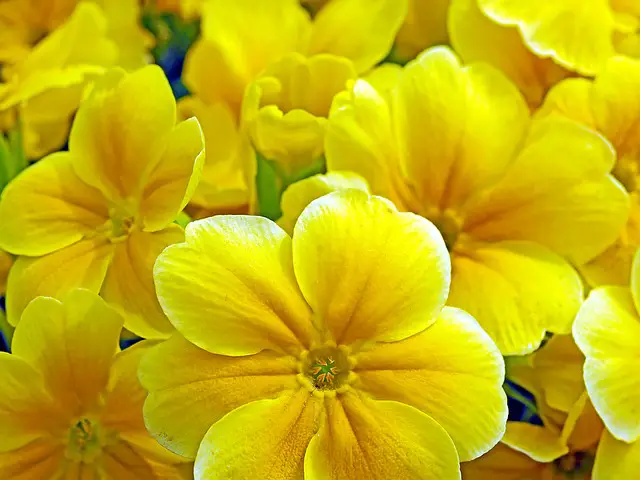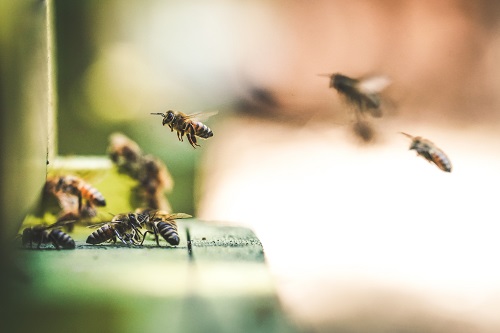Impressive Plants That Absorb Lots of Water and Why Do You Need Them?
Do you live by a lake or do you have a place that gets flooded frequently? Or is there a corner in your otherwise perfect yard that is stubborn enough not to grow anything because the area might be sunken or perhaps at the bottom of the hill. Whatever the case may be, having a perfect yard when the soil is always damp can be quite daunting as you don’t want to see your money and efforts on the plantation go down the drain (quite literally). But we have good news for all of you in despair. While most plants end up wilting and eventually dying if overwatered, there are some plants that not only do well in the flooded areas but are extremely helpful for the soil as well. So it’s time to spruce up your yard with these super impressive thirsty plants that absorb excessive water.
The Best Water-Absorbing Trees
We are talking about trees here. Massive, water-absorbing guzzlers! So if you are in a fix where your yard cannot grow trees, we are here to help you. This detailed compiled list of thirsty trees will be a solution to your wet soil woes for plantation. So why wait, just read on!
1. Red Maple
These deciduous trees are native to North America and are found in abundance. Red Maples are perfect for areas where the soil is over-flooded with water but what makes them special is their widespread foliage that can transform into a wide range of colors. From red leaves to green stems, this tree could be the ornamental focal point of your yard. Another plus factor for planting this tree is that it does not have invasive roots. So it can be a perfect tree to grow near the sidewalk.
The two most important care requirements for maple trees are moisture and ample sunlight (but can tolerate partial sun too). Fertilizing is of utmost importance for its growth. Spring and fall are the best chosen time to plant this tree because of the moderate temperature. The wilted leaves of this tree are toxic for horses.
Did you know: Red maple is also known as a swamp maple tree.

2. Ash
Native to eastern and north America, ash is a flowering tree species belonging to olive and lilac families. Expect beautiful foliage in the fall with the hues of purple and gold. These are mostly deciduous and evergreen trees. Green and white ash are common types that are usually mistaken for each other. These require the same care conditions except for the black ash tree that is not at all shade tolerant.
Plant them in a spot where they can receive maximum sunlight and of course, all-year-round damp soil. Windy areas can have a damaging effect on the tree. These are fast-growing trees that can reach up to the height of 70-80 feet high.
A very flexible care routine is required for these trees. You can feed them once annually with an all-purpose fertilizer by spreading it under the canopy and watering it well into the soil. Pruning dead leaves and branches can result in a sturdy structure and healthier growth.
Recommended: A strict distance of at least 20 feet from the house walls is advised for plantation.

3. River Birch
River birch is best suggested for the prevention of soil erosion and horticulture. So if you have a lake house, plant a river birch in your yard. The strong roots prevent erosion and usually are grown near the river banks. The only birch tree that is found in the southern states of America, this tree can do well in hot climates as well.
It has a medium to fast growth rate and can grow up to 13 to 24 inches in a year. This tree needs full to partial sun, so choose a spot where it can receive the required sunlight. We recommend planting it on the north of your house. Cool moist soil is a must for river birch. The tree is not at all invasive although it has widespread roots. Just make sure that you plant it at a minimum distance of 20 feet away from your house and power lines. Planting it near the water lines is a big no as the roots might crack them up in search of water. The best time to plant is spring and fall because of the cooler temperature of the soil.
Here’s a detailed guide on 10 types of trees you can grow in your garden if you live in cold weather areas.

4. White Cedar
White cedar is a coniferous evergreen tree that is widely cultivated as a decorative plant. In spring it grows a cluster of white and lilac flowers that are mildly fragrant. This tree can grow up to 40 to 70 feet tall (13 to 24 inches per year); needs damp cool soil (alkaline and acidic both) and full sun to thrive. Wet feet result in root rot. These are very heat tolerant trees. White cedar is clearly a water-loving tree that loves moist air as well. It prefers mulch and compost so fertilize it regularly during the growing season. Plant it away from the foundation of your house to prevent any kind of damage as the thirsty roots become invasive as it grows. Pruning, if done, makes the structure stronger. It is known to have high toxic elements which can be life-taking.
Did you know: White cedar has a lifespan of 800 years and is a rich source of Vitamin C.

The Best Water Absorbing Shrubs
You have a dream of decorating your yard but the poor landscape drainage will not allow you and unfortunately, the area of your yard is not that large to accommodate big water-guzzling trees. But trust us when we tell you that there are these thirsty shrubs that won’t disappoint you. Now you can have a beautiful garden that can heal the drainage issue as well. A detailed review of a few water-absorbing shrubs awaits you.
1. Inkberry
An evergreen shrub from the holly family, inkberry is a slow-growing, rounded shrub. It grows to a height of 5-8 feet high but you can find a smaller cultivated size as well. This shrub requires full sun exposure in colder climatic conditions. But it is tolerant of partial shade in warmer areas. It loves acidic and moist soil. Inkberry grows the best when you provide it with moist and well-drained soil all the time. The plant is not toxic but its fruit (berries) is considered to be toxic to both animals and plants.

2. Blue Elderberry
Blue elderberry is a coarse deciduous shrub found near the streams. But when it comes to growing in homes, it is the best ornamental shrub. It bears attractive blossoms in the spring followed by clusters of blueberry fruit. These are edible blueberries we are talking about here. Can be used in wines, jams, and pies!
A shrub that is very flexible in terms of sun exposure. It can thrive well in full sun to full shade. But moist soil with good drainage is a compulsion for this shrub. It can also take wet feet during the winter which is a dormancy period for this plant. It can grow as tall as 30 feet high.

3. Red Twig Dogwood
These flower-bearing deciduous shrubs are native to North America. Red twig dogwood produces creamy white flowers in spring and green berries later on that ripen to become white in fall. This shrub is known to grow near swamps and marshes, hence will work so well with the poorly drained problem area in your yard. A mature shrub can reach up to the height of 7-9 feet high. You might need some horizontal space for this shrub as it expands vastly along the ground.
Full sun exposure is best for this shrub but it can also adjust to part shade conditions. The bright red branches can serve an ornamental purpose in your yard. Pruning encourages fresh growth so don’t forget to take off those dead branches.
Soak up impurities from your surroundings with these 8 must-have plants to increase the oxygen level in the house.

4. Black Chokeberry
The black chokeberry shrub is native to Minnesota and very flexible in the soil choices that it grows in. Widely used for erosion control, these shrubs love wet soil. The blackberry choke fruit is edible and used in baking and to make jam and jellies. These are antioxidant berries that can kill cancer cells, protect the heart, and control blood sugar. It blooms in spring with a cluster of white beautiful flowers. And then comes the fruit. The berries ripen in late summers reaching the full purplish-black color. Planting it in full sun is preferable but can also adapt to lesser sun exposure. This shrub can reach up to the height of 3-8 feet high.

The Best Water Absorbing Plants and Flowers
Flowering plants are usually very sensitive to over-exposure to wet soils. So if you want your yard to have the perfect spring look but the wet poorly drained soil doesn’t allow you, it’s time to reconsider your choices. There are a few selected flowering plants that can thrive well in wet soils.
1. Day Lily
You would be thinking that this is a lily flower as the name suggests but is not. The flowers are beautiful with color palettes ranging from red, yellow, pink, and more. It is a perfect perennial plant that is suitable for growing in all landscapes. The flowers bloom in late spring. The plant is adaptable to different light and soil conditions but thrives best in wet soil. Day lily can reach up to the height of 30 inches.

2. Primrose
Primrose is a beautiful flower-bearing plant that thrives best in wet soils. You will find the flowers in a variety of colors. It can be termed as a dwarf plant that grows no more than 10 cm in height. It blooms in late winters to late spring. Intense summer heat is not suitable for their growth as they prefer cooler temperatures and part shade. Keep the moisture levels in check as they don’t like to dry out.

3. Japanese Iris
The tallest of the iris flowers, the Japanese iris can grow up to the height of 24 to 48 inches tall. If you are planting it in a warmer zone, we suggest protecting them from the hot afternoon sun. The blooming time for this flowering plant is from early to midsummer as the blooming time is limited to two weeks only. This plant spreads quickly but we would not term them as invasive. Grow it in a pond but if that is not available then give it ample water to keep the soil moist at all times.

4. Globe Flower
Globe flower is a flowering plant that thrives well in moist to wet soils. They bear yellow globe-shaped flowers that bloom in spring. These are also perennial flowers that resemble the buttercup. This plant can grow up to 6 to 36 inches in height and are full to part shade lovers. Plant them as flower beds or line them along the path and you have a beautiful yard to go!

5. Bee Balm
Bee balm is a perfect cottage garden flowering plant and comes in a vast variety. They prefer rich and moist soil to grow. So make sure to water them regularly or plant them where the soil is most wet. Most of them can grow up to 2 to 4 feet high. It thrives well in a sunny spot but protects it from the summer sun. Bee balm has proven to soothe indigestion and bloating issues. It is also used for treating cold and flu.

6. Purple Coneflower
Belonging to the daisy family, the purple coneflower is a coarse and hairy flowering plant. This grows well in moist areas hence another water-absorbing flowering plant that will work well with the poorly drained land. These flowers have a great medicinal value as it boosts the human immune system. Provide them with a layer of compost in spring. Full to part shade is good for them to grow.
If you are fond of aloe, don’t miss this article on 10 most popular types of aloe plants to grow in your home environment.

A Few Things to Keep in Mind Before the Plantation:
● Check Your Hardiness Zone
Check your region before selecting a particular tree or a plant. Ask yourself if it will thrive well in the weather conditions you normally face.
● Know Your Space Limit
Another thing to consider before planting a tree or plant is if you have enough space for it to grow. Some trees have a very widespread and extensive root system. Will your yard space be enough or will the walls of your house be in jeopardy because of that? (As some thick roots weaken the foundation of the building)
● Care Requirements for Your Selected Tree
Have you chosen the right spot to plant your tree where it receives the required amount of sunlight? Also as much as these plants need water, their soil needs to be fertilized more frequently as compared to the plants which take up less water to thrive.
Reasons to Use Water-Absorbing Plants
1. Improve Drainage
A significant hitch to the foundation of your building, poor drainage is a problem that can be well cured by planting water-absorbing trees and plants.
2. For Sunken Area
Build a rain garden if you have a sunken area problem. The thirsty plants that make up the rain garden will be a good cure for soil erosion.
3. Help Cleaning Standing Water
Standing water can be a cause of various illnesses. The easiest solution to clean and clear the standing solution is to plant water-absorbing plants.
We hope that this article will help you a great deal in sprucing up your place while mending the issues of poor drainage and sunken areas.
Recommended Article- Want to Repel Flies, Mosquitoes and Bugs Organically? Here Are 10 Incredible Plants For the Job



